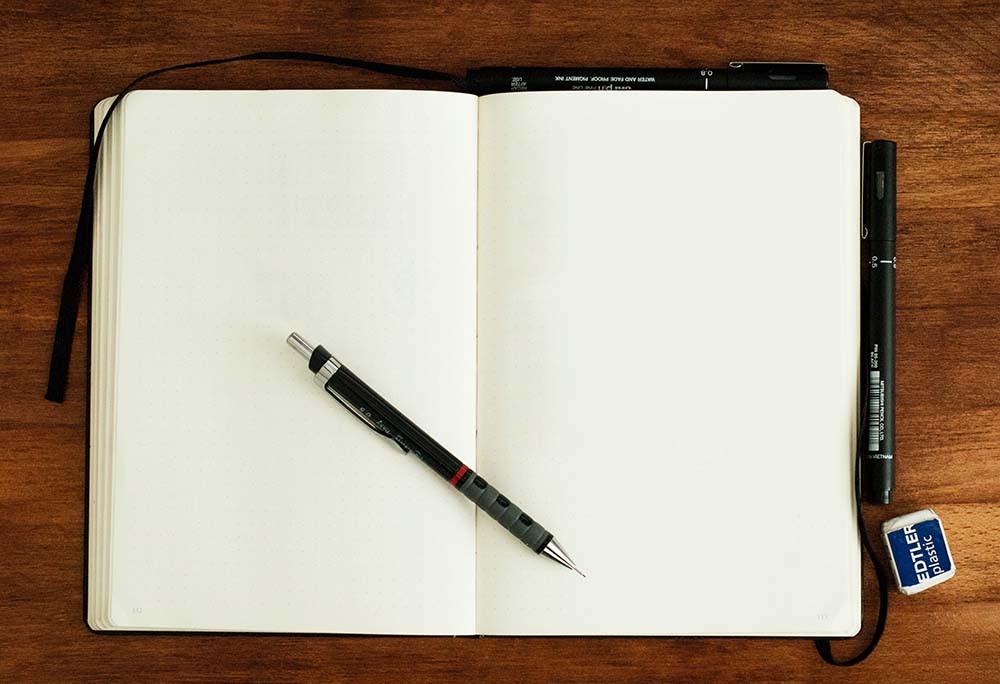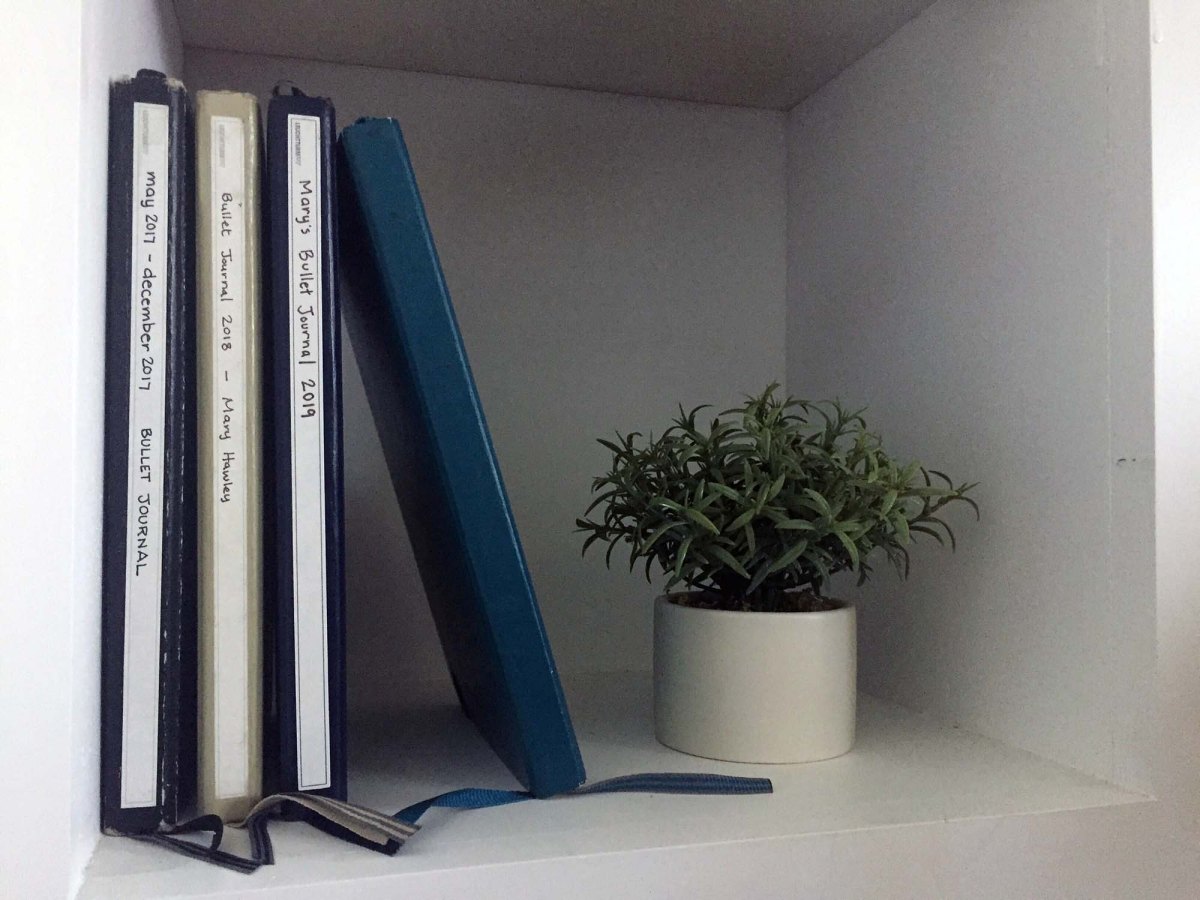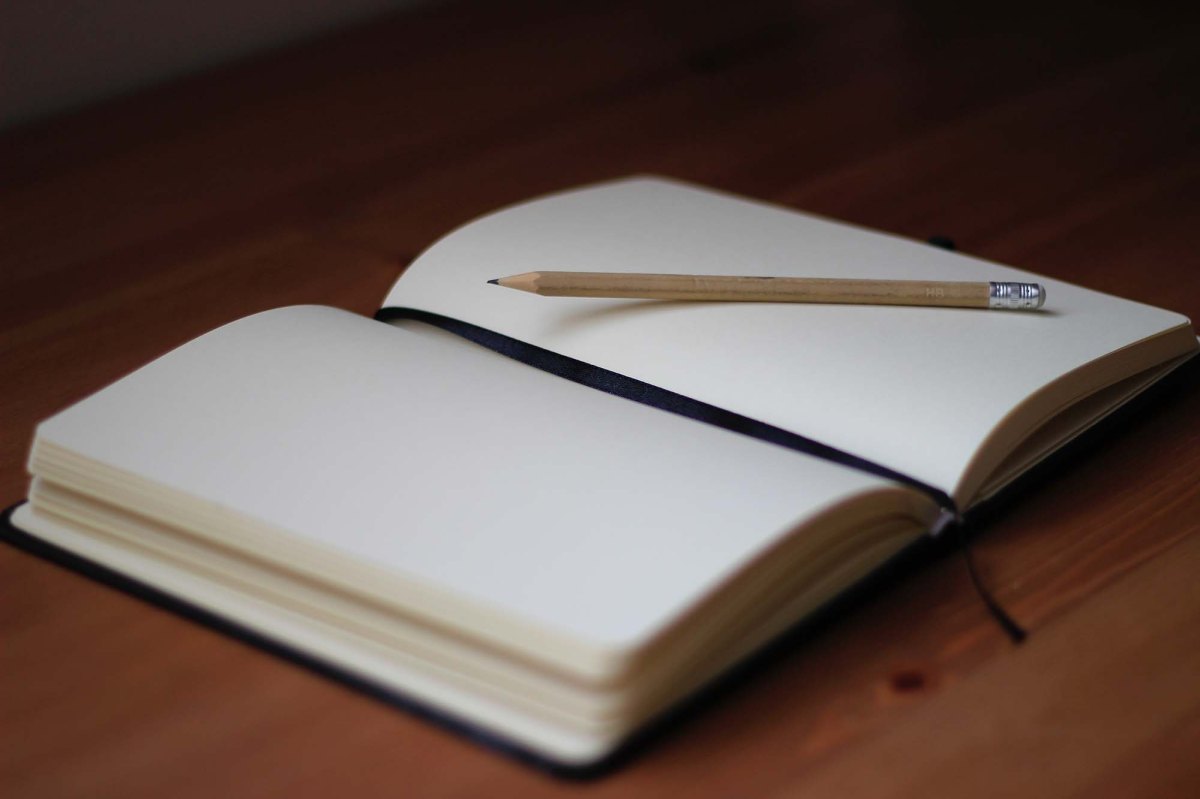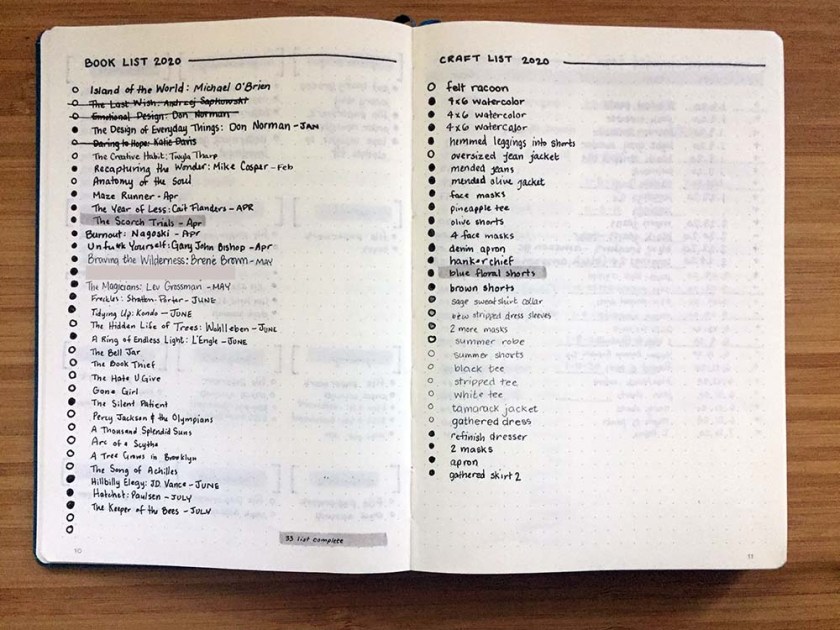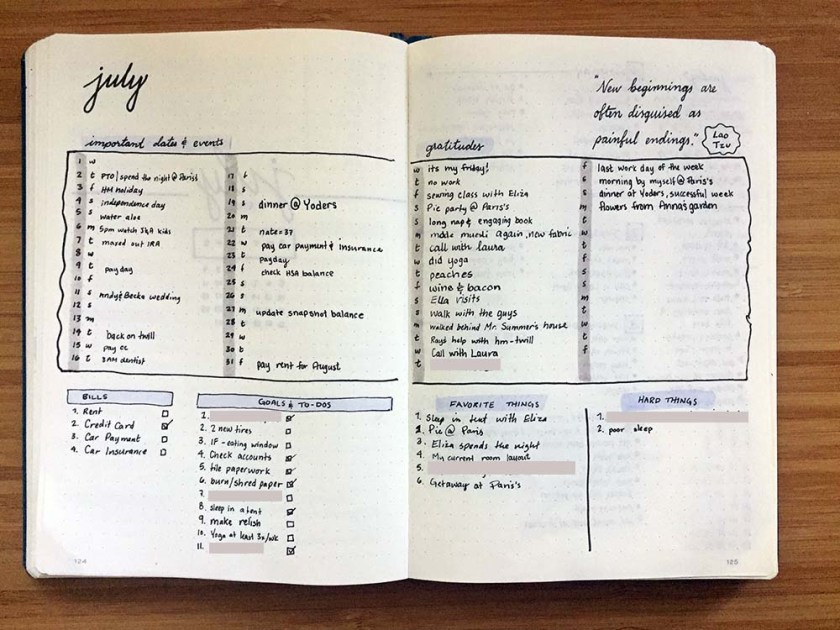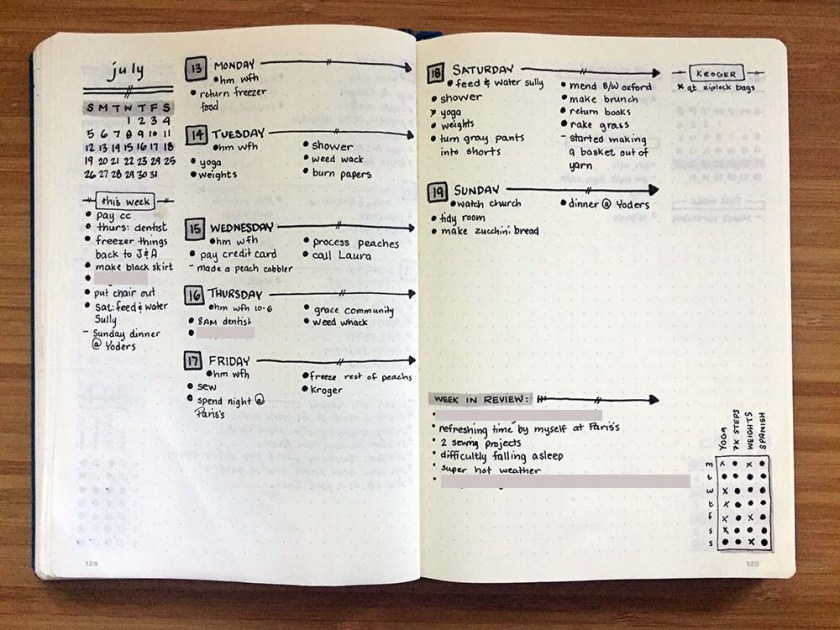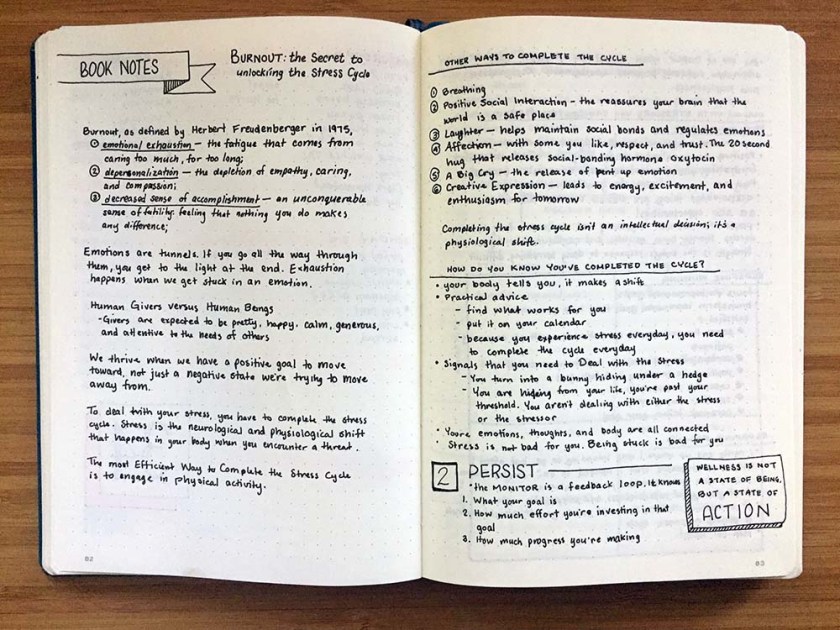The Bullet Journal system has five kinds of layouts or collections: an Index, the Future Log, Monthly Logs, Daily Logs, and Custom Collections. Through trial and error, I discovered there is a good reason to keep your bullet journal simple.
If you look at social media for inspiration, you’ll find many beautiful spreads. I used many of these as templates in creating my own layouts. But making beautiful layout became too time-consuming. Other collection pages I added to my bullet journal but then realized they didn’t add value. This is a list of a few things I have stopped including in my bullet journal and why.
1. A Key
I have been bullet journaling long enough that I know my own system and don’t need to use the bullet key for reference. So I skip this page and save the pages at the beginning of my bullet journal for more useful information.
2. Complicated monthly themes
There is something exciting about planning a theme for an entire month. Thinking about all the little drawings and borders to include on each page for the month can be fun. But coming up with a new theme every month for years got old. And adding the month theme details to each page was too much work! Now the closest thing to a monthly theme is a different highlight color. The different colors are purely practical so that I can easily identify months when flipping through my bullet journal.
3. A Collection of Show and Movies I have watched
I thought that it would be a good idea to know what I have watched so I don’t watch it again. But Netflix already keeps a list of what I watch. Making a duplicate list didn’t prove to be beneficial.
4. Fancy Reading list Collection
In my first couple of bullet journals, I drew a picture of a bookcase with books on it and the title of what I read on those books. I also had a complicated color-coded method of marking when those books were read. Now I keep my reading list is a literal list format, and I read so much more!
5. Reflection/Brain dump pages
Longer writing can be done much faster in an electronic format. So instead of having unorganized blocks of text throughout my bullet journal, I keep all my reflections and more traditional journaling outside of my bullet journal.
6. Monthly Habit Trackers
These never worked for me. There always seemed to be too much flipping back and forth between pages. When I use my bullet journal on a daily basis, I look at that day’s log. I don’t always look at the monthly log. Tracking information on the monthly log just didn’t work for me.
7. Budget information
Monthly budget information is hard to record in a format that makes sense in a bullet journal. Keeping totals of spending categories requires math and a calculator. Budget information is much easier to track on a spreadsheet or an app specifically designed for budgeting.
8. Artwork
When I started my bullet journal, one of my goals was to have a place to keep all of my artwork. I really wanted to draw more and I thought that a bullet journal would help me to be more creative. Initially, it did. But as the mediums I used for artwork expanded, I couldn’t keep it in a bullet journal format.
9. Recipes
I love baking. Often I would jot down a recipe in my bullet journal. But once a bullet journal retires, I don’t like pulling it out again to reference the recipe. Now I keep all my recipes in their own notebook.
10. Difference Weekly Log layouts
I tried out so many different weekly log layouts. But once I found one that worked well, I don’t change it. In my current bullet journal, I use the same layout every week and it’s been helpful. Now when I flip through the journal looking for something, it is very easy to distinguish between different types of pages.
I hope these tips help you make your Bullet Journal work for your life. Happy journaling!
